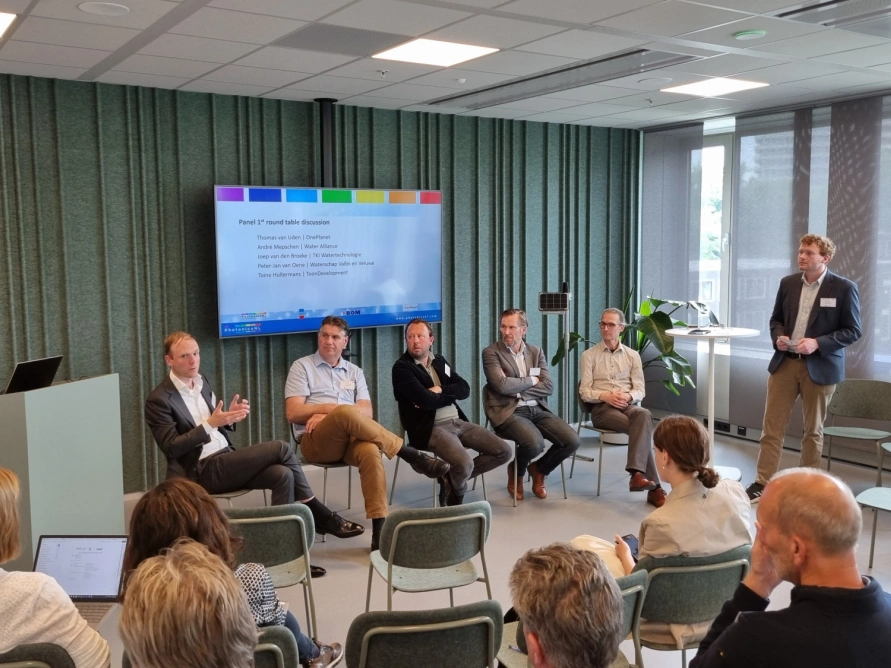Self-driving vehicles, transmitting astronomical amounts of data with relatively little energy, and sensors that can quickly and affordably detect diseases or measure water quality — photonics makes it all possible. And much more. Yet many photonics companies are still waiting for a true breakthrough. The Brabant Development Agency (BOM) is investigating where the bottlenecks lie.
We've been hearing it for years: photonic sensors and photonic chips, which use light instead of electricity, are the future and potentially represent a multi-billion-euro industry. It’s no surprise, then, that the Netherlands — and especially Brabant — is home to a wealth of innovative companies actively developing photonics technologies.
Brabant’s strong cluster of photonics companies is no coincidence. Eindhoven University of Technology has long been a leader in photonics research, alongside TNO and the Photonic Integration Technology Center (PITC). Eindhoven is also home to PhotonDelta, a public-private partnership that invests in scaling up photonic chip production, attracting and training talent, and creating new markets.
Brabant’s Photonics Industry
These efforts have led to significant economic activity and the emergence of a photonics industry in Brabant. Companies like SMART Photonics, Effect Photonics, Astrape Networks, Eyeo, and PhotonIP have been making strides, often with support from BOM. A photonics cluster has also emerged in the eastern Netherlands, where the University of Twente conducts research.
However, the Dutch photonics industry has yet to reach full maturity. There is clear potential for strong demand from the data and telecom sectors — particularly for high-volume data transmission enabled by photonics. The first concrete applications are also emerging in medical technology. But the potential of photonics extends far beyond that. Photonic sensors could be applied in many more areas.
The real breakthrough in this regard is still pending. While photonic sensors are indeed being integrated into modern equipment, large-scale adoption has yet to occur. To explore why this is the case, BOM, together with PhotonicsNL and Oost NL, organized the event 'Photonics in Sensing and Quality Control'.
Learn more

During the symposium at OnePlanet Research on the Wageningen University campus, researchers, entrepreneurs, and development agencies gathered to discuss the future of photonic sensors. How can we create more value with this innovative technology? A key topic of discussion was water quality.
The calculation was quickly made
Why water? Because the challenges are urgent. Take, for example, the European Water Framework Directive, which requires Dutch waters to provide a healthy habitat for plants and animals by 2027. Or consider the rising costs of purifying drinking water, partly due to pharmaceutical residues. It’s no coincidence that BOM previously concluded that, after grid congestion and nitrogen, water is next in line to become a major societal headache.
So the logic seemed straightforward: photonic sensors enable new measurement techniques, and the ability to accurately monitor water quality is essential. One plus one equals two? Well, not quite.
It quickly became clear that several obstacles stand in the way. While photonic sensors and chips can indeed measure a wide range of parameters, that doesn’t automatically result in a market-ready product. For instance, how do you ensure that such a sensor is protected against water, wind, sand, or corrosion — and still remains affordable?
Unfamiliarity breeds disinterest
Another issue lies within the market itself. There are many parameters that can be measured and countless potential applications. However, photonic sensors are often designed to measure just one specific thing. The result? They may be so specialized that there’s no viable business case — the market is too small, and the sensor becomes too expensive. If they could be used more broadly, a larger market might emerge.
Potential buyers of photonic sensors also want a ready-to-use product that has been proven effective. But an entrepreneur with an innovative photonic sensor can only demonstrate that their solution works and can be produced at scale and at a reasonable cost if a customer is willing to invest and show trust. And that’s not even considering the fact that many potential customers are unfamiliar with photonics. And as the saying goes: unfamiliarity breeds disinterest.
One thing became clear during the symposium: the worlds of scientists, entrepreneurs, engineers, and potential end users are still too far apart. All the pieces of the puzzle are there, but it takes time and money to test and develop solutions. What’s needed is a broker — someone who can translate knowledge of new technologies into market-ready applications.
This could be a valuable role for regional development agencies like BOM: bringing these parties together more often. Can we, for example, clearly identify the questions coming from the market? What does the end customer actually need? And can we then work with entrepreneurs to find a scalable and affordable solution using photonics? In short: can we bring innovative technology to market faster? To be continued, without a doubt.

